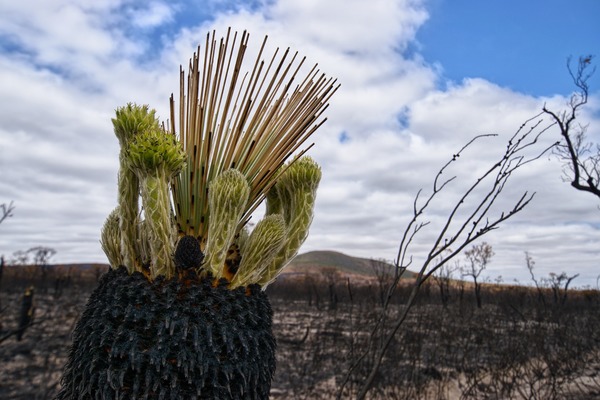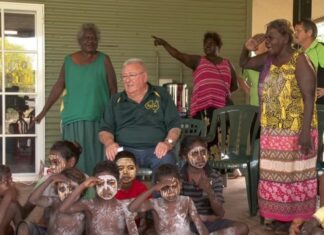An independent review of the September 2019 bushfires found Queensland’s preparedness and response was highly effective in saving property and reducing the severity of fires at Stanthorpe, Sarabah and Peregian Springs.
Premier Annastacia Palaszczuk said the review undertaken by Queensland’s Inspector-General Emergency Management (IGEM) highlighted strong and continuous enhancement in the state’s bushfire preparedness, mitigation and overall firefighting response.
“The 2019 Review found examples of good practice implemented by state and local agencies including integration of the State Emergency Service (SES) in the bushfire response,” Ms Palaszczuk said.
“With SES workers trained to replenish waterbombers, aircraft were able to return to the skies within three minutes.
“This was a phenomenal response to extraordinary conditions.”
More than a million hectares throughout the state were control-burned last year to manage fire risk and less than two per cent of Queensland’s 2019 bushfires started in national parks.
Since 2015, more than 3.9 million hectares has been burned in National Parks.
Minister for Fire and Emergency Services Craig Crawford said pre-season mitigation burns helped save Stanthorpe.
“What this report shows us is targeted burns around community assets are highly-effective,” Mr Crawford said.
“Predictive technology forecast the Stanthorpe fire would put the town in danger, but with containment lines in place, the blaze was stopped.
“The State Operations Centre was also supported by Queensland Police Service, Queensland Parks and Wildlife Service and Queensland Ambulance Service liaison officers, facilitating proactive inter-agency cooperation.
“We pride ourselves on a culture of continuous improvement in Queensland to ensure our disaster management arrangements remain world-class and keep our communities safe.
“We continue to look for further enhancements, particularly with fireground radio communications and more integration of liaison officers.”
Inspector-General Emergency Management Alistair Dawson APM said the 2019 Review commenced three months after the tabling of the 2018 Queensland Bushfires Review.
“Our focus was on gathering observations and insights about what worked well, new innovations and any areas for improvements,” Mr Dawson said.
“The review team heard many acts of bravery and community resilience.
“We heard stories about commitment, courage and resourcefulness of all involved including volunteer and fulltime firefighters, SES, police and emergency services, and members of the community.”
Mr Dawson said the Review found the Queensland Government is well-placed in implementing the recommendations from the 2018 Queensland Bushfires Review
“The 2019 Review notes the work already undertaken in finalising the recommendations from the 2018 report tabled in July 2019, which has been supported by strong innovative practice and lessons learned from the previous fires.”
Three recommendations from the 2018 report have been implemented and work on a further recommendation is well underway.
Sunshine Coast Local Disaster Coordinator Tom Jamieson has echoed the Queensland Government in praising emergency services, council staff and the community for their united response to the September 2019 fire at Peregian Springs.
Mr Jamieson said Sunshine Coast Council and the Local Disaster Management Group (LDMG) stood ready to assist the community in any disaster or emergency.
“We will never forget the courage of our Queensland Fire and Emergency Services personnel during the Peregian fire ember storm,” he said.
“Supporting those firefighters on the frontline were the police, ambulance and other community service providers and our own council staff who worked around the clock in our Disaster Coordination Centre, at the evacuation centre or helping others in the affected communities.
“The findings from the 2019 Queensland Bushfires Review confirm our commitment to disaster preparedness paid off when our community needed it most.
“According to the review, more than two-thirds of the survey respondents confirmed they had partially or fully prepared a household emergency plan, an emergency kit, an evacuation plan and an evacuation kit to prepare their family and property for a disaster event.
“More than 80 per cent of those surveyed in Peregian responded that they would know during a disaster event, where to get reliable information about whether to shelter in place or access an evacuation centre.
“Confidence ratings, for being prepared and knowing how to respond and recover from a disaster event, and understanding local risks, were more than 90 per cent in Peregian.
“This shows our constant, coast-wide campaign to ensure our community is prepared for disaster, along with efforts from our partner organisations, is having a real impact.”
Mr Jamieson said the report also highlighted future recommendations which council will be looking to implement in our own region.
Sunshine Coast Council Disaster Coordinator Cathy Buck said the preparedness activities undertaken by the LDMG, including a simulated disaster in August, helped ensure a swift and collaborative response.
“As highlighted in the review, our pre-season exercises are essential in familiarising agencies with response coordination, communication and information arrangements,” Ms Buck said.
“We take these exercises just as seriously as we would an actual disaster and the skills learned are vital in helping ensure we are prepared for when the worst happens.
“Last year we were also recognised as national leaders in disaster preparedness, winning the Local Government Award at the 20th Resilient Australia Awards for our Get Ready Schools Program, which empowers young people and assists their learning, awareness and preparation for disasters.”
Residents can visit council’s Disaster Hub disaster.sunshinecoast.qld.gov.au for all the information they need to prepare their homes and businesses, and stay up to date with important information such as road closures, evacuation centres and weather warnings.
The Sunshine Coast LDMG membership includes Mayor Mark Jamieson as the chairperson, and representatives from the Sunshine Coast Council, emergency services, key non-government departments, local education institutes, energy and water service providers and tourism organisations.
The LDMG is the coordinating body for managing the response and recovery from a local disaster event and is responsible for developing and implementing the Sunshine Coast Local Disaster Management Plan.
In 2019 the Sunshine Coast LDMG responded to eight natural disaster events and in 2020 have already responded to one severe rain event.
The Queensland Bushfires Review 2019-20 can be downloaded by visiting www.igem.qld.gov.au.







